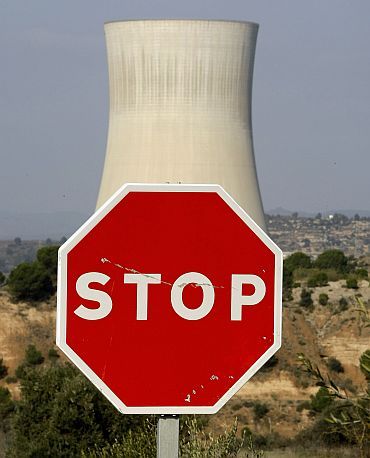
A 'pause-and-review' approach to nuclear power isn't extreme. Safety is too precious to be sacrificed to appease our nuclear lobby, writes Praful Bidwai
What do social scientists Romila Thapar, Ramachandra Guha and Jean Dreze, dancers Leela Samson and Malavika Sarukkai, former bureaucrats/diplomats SP Shukla, Nirupam Sen and EAS Sarma, retired Navy chief L Ramdas, writers Arundhati Roy and Nayantara Sahgal, scientists MV Ramana and PM Bhargava, artists Krishen Khanna and Vivan Sundaram, and former vice-chancellors Mushirul Hasan and Deepak Nayyar, have in common?
The answer is, concern about the safety of nuclear power, highlighted by the still-unfolding disaster at Fukushima in Japan. This impelled these eminent individuals to sign a statement demanding a thorough and independent review of India's nuclear power programme, and pending it, a moratorium on further nuclear projects.
The statement (available at www.cndpindia.org and www.sacw.net) saw people of different ideological persuasion come together, including former Atomic Energy Regulatory Board chairman A Gopalakrishnan, and activists of the Coalition for Nuclear Disarmament and Peace (including myself).
...

Prof P Balaram, director of the Indian Institute of Science, Bangalore -- one of our few world-class science institutions -- also signed the statement. Normally, such high-profile scientists, who are appointed to the Prime Minister's Scientific Advisory Council and other policy-oriented committees, don't publicly comment on policy issues.
The citizens' appeal comes just as the deaths of two workers of the Fukushima station have been confirmed by the operator, Tokyo Electric Power Company (TEPCO). This crushingly falsifies the cocksure prediction by nuclear power zealots that the Fukushima accidents would not harm the health of plant employees or the larger public.
TEPCO admits that three other employees have suffered severe radiation burns; many others have been exposed to radiation. Worse, the public is at risk.
Radiation levels at the plant are of the order of 1,000 millisieverts an hour, several thousand times the highest permissible radiation dose for plant employees (30 millisieverts a year). Large quantities of radioactive water and steam have been released containing dangerous isotopes such as iodine-131, caesium-137 and strontium-90.
Their presence has been detected thousands of kilometers away -- on the US West Coast, in much of Europe and in East and Southeast Asia.
True, their concentration decreases rapidly with distance. But it's high enough in a 30-km radius for the authorities to recommend evacuation. Radionuclides have entered Japan's food chain, and contaminated milk, vegetables and fish. Iodine-31 concentrates in the thyroid, caesium-137 in many other tissues, and strontium-90 in bones.
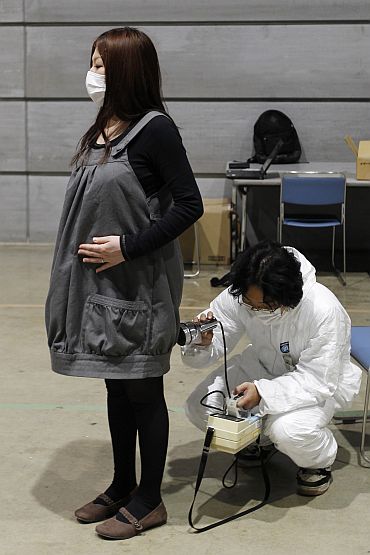
Eventually, the health damage from Fukushima will be revealed not through early deaths, but through a slow, virtually endless incidence of illnesses from low radiation exposure, including cancers, as in Chernobyl.
Only 32 people, mostly firemen, died immediately after Chernobyl, whose 25th anniversary falls on April 26. But since then, estimates of the death-toll (based on projections of the International Commission on Radiological Protection an other UN bodies) have risen exponentially, varying from 34,000 to 70,000. Ukranian-Russian researchers clam much higher numbers. Even on the low estimate, Chernobyl is easily the world's worst-ever industrial accident.
True, the Ukrainian authorities delayed evacuating people around Chernobyl. The Fukushima toll won't be nearly as high because of early evacuation. But the reactors contain huge quantities of caesium-137, estimated to be 48,000 times those from the Hiroshima bomb and 40 times the inventory in Chernobyl.
If only a tenth of Fukushima's caesium inventory is released, its impact would be four times greater than Chernobyl's. According to researchers using data gathered from monitoring stations of the Comprehensive Test Ban Treaty Organisation, a UN body, Fukushima has already released iodine-131 equal to 20 per cent of that released from Chernobyl and half as much caesium-137.
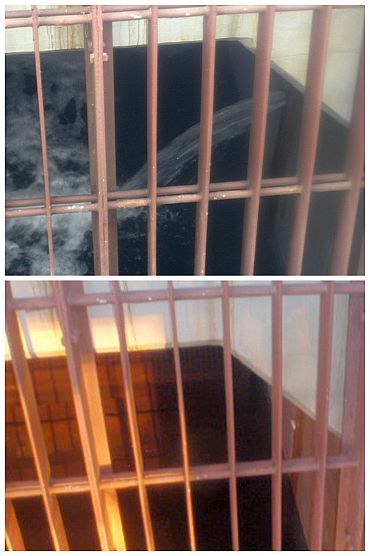
Fukushima happened not because of the earthquake and tsunami, but because these triggered mishaps in reactors, which were vulnerable to a catastrophic accident in the first place. Nuclear accidents happen because of the nature of nuclear technology.
Natural calamities only make them more likely. All reactor designs are vulnerable to core-meltdown accidents. Fukushima's reactors weren't adequately designed for high-magnitude earthquakes and tsunamis. The power back-up on which they would depend after a station blackout came from diesel generators in the basement, prone to flooding.
The Fukushima reactors were also under-designed in other ways. Their primary containment, the vessel in which the reactor is placed, was considered weak by many sources, including the US government's Sandia National Laboratories.
Besides, spent fuel was stored in the reactor building itself. Unlike reactors, the spent-fuel pools don't have reinforced structures. Once hydrogen explosions occurred, the roof of the Reactor 4 spent-fuel pool was blown off. The spent-fuel got heated and the water boiled off, releasing radioactivity. Our Tarapur reactors have the same design.
The Fukushima crisis still remains out of control. Three reactors suffered a partial core meltdown -- estimated by US Energy Secretary Steve Chu at 70 per cent for Reactor 1 and 33 per cent for Reactor 2. Four of the six reactors will have to be written off because seawater pumping has poisoned them. TEPCO will probably go into state receivership.
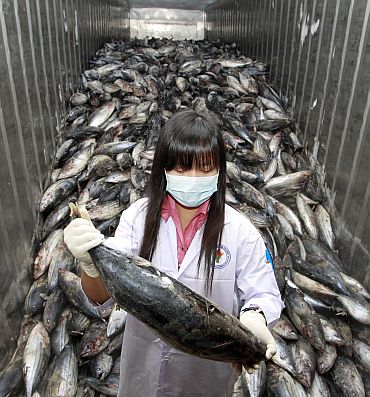
TEPCO is now planning to entomb the four reactors in concrete, which could take up to 20 years.
But this course is fraught with danger. Unless the reactor cores are sufficiently cooled in advance and high-level nuclear waste is safely removed, internal heat will produce cracks in the concrete shell/dome and radioactivity will leak out uncontrollably.
The immediate challenge is to keep the reactors cool and seal the cracks from which water is leaking out. TEPCO claims that its sealing efforts have succeeded after repeated failures. How reliable the seals are remains to be seen.
Even the pro-nuclear industry International Atomic Energy Agency has confirmed that caesium levels even 40 km away from Fukushima are 3.7 megabecquerels per square metre, more than double the level of 1.48 units set as the evacuation trigger for Chernobyl.
Seawater radiation near Fukushima reached levels millions of times higher than permissible ones. If the Fukushima staff is evacuated, the reactors could undergo a full meltdown.

The lessons from Fukushima stand out in their grim starkness. If an industrially advanced society like Japan couldn't handle a nuclear crisis despite its resources and skills, it defies credulity that India's Department of Atomic Energy (DAE) -- with its poor performance, serious accidents, routine over-exposure of workers and the public, and a shoddy safety culture -- can do so.
The DAE has been in denial of the gravity of the Fukushima disaster and claims that serious accidents cannot happen in its own reactors.
Prime Minister Manmohan Singh has ordered a thorough review of India's nuclear installations, especially on their capacity to withstand earthquakes and tsunamis. But Nuclear Power Corporation of India chairman SK Jain boasts: "We have got total knowledge and design of the seismic activities. [The] worst seismic activities and tsunamis have been taken into consideration" in DAE designs.
Soon, however, Dr Singh publicly said (March 29): "The people of India have to be convinced about the safety and security of our own nuclear power plants. We should bring greater openness and transparency in decision-making and improve our capacity to respond to the public desire to be kept informed about decisions and issues of concern to them. I would like to see accountability and transparency in the functioning of our nuclear power plants."
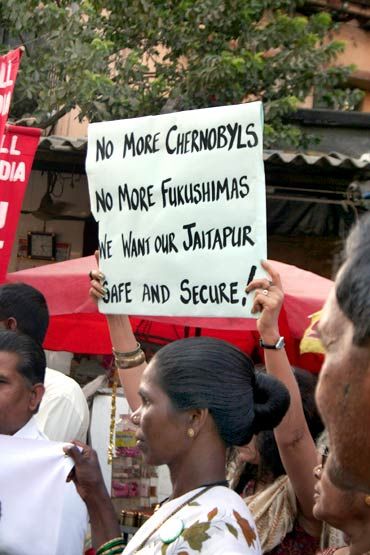
This was a slap in the face of the DAE, which has become the laughing stock of the global scientific community. But that isn't good enough. We need a radical review of our nuclear power policy and a safety audit by a high-level committee which includes non-DAE experts and civil society representatives. A collusive internal job won't do.
Second, we must abandon plans for multiple-reactor "nuclear power parks". A crisis in one reactor can produce "common mode failure" and send other reactors at the site into crisis. Third, we must certainly not import untested designs, such as Areva's European Pressurised Reactors, planned for Jaitapur in Maharashtra.
Finally, we must build capacity to evaluate reactor designs for safety by evolving stringent norms for materials, structural strength and multiple safety and emergency systems. This cannot be done by today's Atomic Energy Regulatory Board, which former chairman Gopalakrishnan says, is the DAE's "toothless poodle".
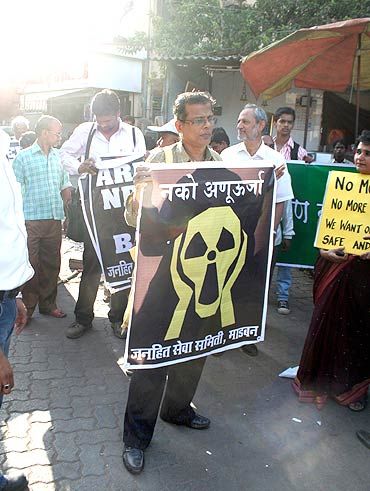
We must separate the AERB from the DAE and strengthen it with non-DAE personnel, an independent budget and equipment. Dr Singh seems inclined to do this, but he must hold broad-based consultations with independent experts with experience of safety design, disaster management, evacuation and rehabilitation.
Most important, pending a review and safety audit, we must impose a moratorium on future nuclear construction and revoke recent clearances to projects like Jaitapur. These were based on sloppy, incompetent Environmental Impact Assessment reports, in violation of public hearing norms, and with all manner of vacuous conditions. The Jaitapur project was cleared for political reasons six days before French President Nicolas Sarkozy's visit in December, with 35 conditions.
A "pause-and-review" approach to nuclear power isn't extreme. If Germany, China and Switzerland can adopt it and suspend their nuclear expansion plans, so can India. Safety is too precious to be sacrificed to appease our nuclear lobby.